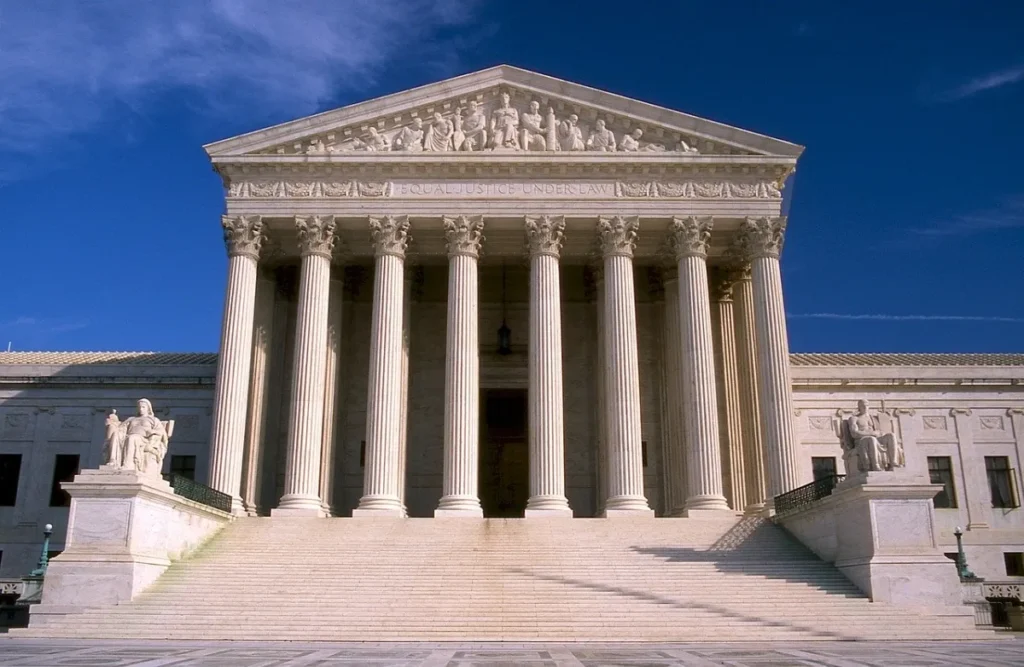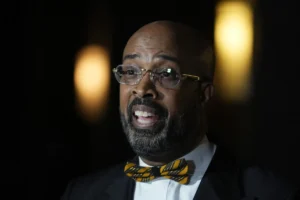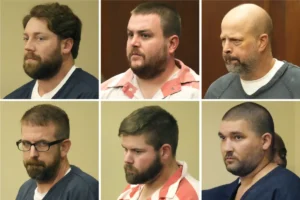Supreme Court ruling limits challenges to unlawful convictions for innocent federal prisoners
3 min read
by NNPA Newswire Senior Correspondent Stacy M. Brown
In a 6-3 decision, the Supreme Court delivered a blow to the rights of federal prisoners, particularly those who may be completely innocent.
This week’s ruling in Jones v. Hendrix establishes a significant hurdle for prisoners seeking to challenge their convictions in court.
The case revolved around Marcus DeAngelo Jones, a federal prisoner convicted in 2000 of possessing a firearm after a felony conviction.
However, in a 2019 case called Rehaif v. United States, the Supreme Court declared that individuals could not be convicted under the felon-in-possession statute unless they were aware of their prior felony conviction at the time of possessing the gun.
Jones argued that he mistakenly believed his previous felony conviction had been expunged when he acquired the firearm, rendering his conviction invalid under Rehaif.
He said because he was unaware of his felony status, federal law did not make his possession of the firearm illegal.
Unfortunately, the Supreme Court’s ruling, as outlined in Justice Thomas’s opinion, prevents Jones from challenging his conviction altogether.
The outcome is because of a federal law known as Section 2255, which generally bars federal prisoners from making multiple challenges to their convictions or sentences.
Jones had previously succeeded in petitioning a federal court to vacate a portion of his sentence before the Rehaif decision, which Thomas argued extinguished his sole opportunity to challenge his conviction, even though Jones had no way of knowing that his claim of innocence would become potentially valid after Rehaif.
Although Section 2255 does include exceptions that allow for a second challenge under certain circumstances, Thomas narrowly interprets the provision, stating that the usual process is “inadequate or ineffective” to test the legality of a prisoner’s detention.
In her dissenting opinion, Justice Ketanji Brown Jackson criticized Thomas’s restrictive construction and even mocks it by claiming that only a fire or mudslide could provide relief.
Thomas’s majority opinion extends the consequences beyond individuals like Jones, who hope to overturn their convictions due to developments like the Rehaif decision.
Many other individuals who are entirely innocent and wrongfully convicted will also be denied the opportunity for second appeals and remain unjustly imprisoned.
Before Section 2255’s enactment in 1948, federal prisoners had to challenge their convictions in the judicial district where they were incarcerated.
However, the system was impractical and burdensome for federal trial courts near prisons, as they often needed easier access to necessary records, evidence, and witnesses.
Section 2255 addressed this issue by requiring prisoners to bring challenges to the court that initially tried and convicted them, ensuring a more equitable distribution of cases among federal district courts, and providing the court most familiar with the prisoner’s case to hear the habeas suits challenging their confinement.
Although Section 2255 ordinarily restricts prisoners from filing a second habeas challenge if they were previously denied relief, it permits a second challenge if the usual process is “inadequate or ineffective” to test the legality of their detention.
However, Thomas characterized previous decisions allowing prisoners to file second challenges as an “end-run” around the limits set by federal law for habeas petitions.
He interpreted the “inadequate or ineffective” provision so narrowly that very few cases would meet its requirements, leaving prisoners fighting unlawful convictions with limited recourse.
In response, Justice Jackson argued in her dissent that Thomas’s reading of Section 2255 is completely unsupported by the text.
Both justices agreed on the historical purpose of Section 2255, which aimed to relieve the burden on district courts near federal prisons.
However, the statute contains no language that aligned with Thomas’s interpretation of the “inadequate or ineffective” provision.
Jackson asserted that Congress reenacted this exception in 1996, using identical language, and intended it to preserve prisoners’ ability to bring postconviction claims, including those based on statutory innocence, that might have been inadvertently barred by the language adopted in the amendment.
Experts said the outcome of the Jones case revealed not only the complexity of federal habeas law and the procedural challenges prisoners face but also a longstanding philosophical divide within the Supreme Court.
Liberal-leaning justices argued that the criminal justice system should primarily focus on determining a defendant’s actual guilt and provide adequate safeguards for challenging wrongful convictions.
On the other hand, conservative justices, including Thomas, emphasized finality in criminal judgments, even if it meant potentially denying the innocence claims of prisoners.





